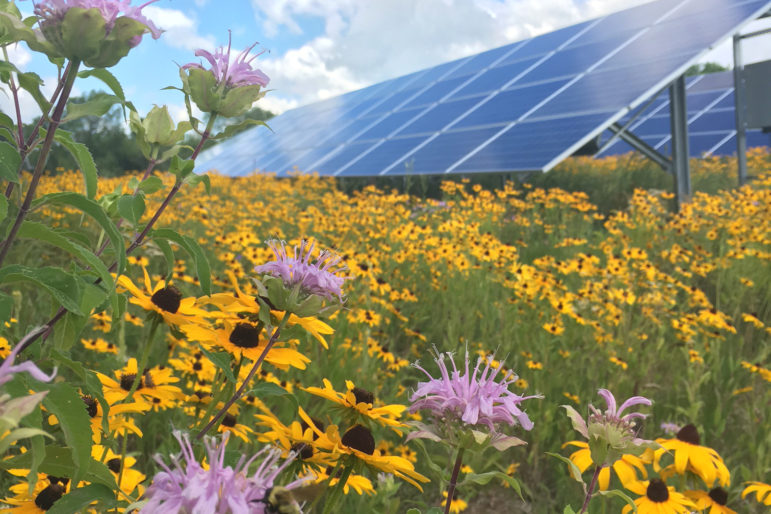 “Butterflies, birds, and bees find a haven at Connexus” proclaimed the email recently sent to all members of Connexus Energy, Minnesota’s largest customer-owned electric cooperative. Connexus’ community solar garden hasn’t just been popular with its members — the site is also benefitting Minnesota’s bumblebees, honeybees, and foraging song birds — and is on the leading edge of a rapidly growing trend.
“Butterflies, birds, and bees find a haven at Connexus” proclaimed the email recently sent to all members of Connexus Energy, Minnesota’s largest customer-owned electric cooperative. Connexus’ community solar garden hasn’t just been popular with its members — the site is also benefitting Minnesota’s bumblebees, honeybees, and foraging song birds — and is on the leading edge of a rapidly growing trend.
Connexus’ September member newsletter highlighted the score of 100, “exemplary pollinator habitat,” its solar garden had achieved on Minnesota’s statewide standard for pollinator-friendly solar. Introduced by Minnesota agricultural leaders, and supported by a coalition including Fresh Energy, State legislators voted overwhelmingly in support — a combined vote of 188-2! — of pollinator-friendly solar earlier this year.
“There are simple things electric cooperatives can do to take part in restoring pollinator habitat,” noted Great River Energy’s Lori Buffington in a presentation to the Rural Electric Management Association. “Even small, low-cost plantings can provide significant environmental and educational benefits.” Demonstrating its commitment to conservation, Great River Energy has established more than 200 acres of native prairie plantings throughout the state.
The timing couldn’t be better for commercial bees and wild pollinators, which have suffered massive population losses in our lifetimes in part because of dwindling access to food and habitat. For wild insects and managed bees these sites will be multi-acre buffets of nutritious, native plant pollen and nectar.
“Pollinators are an irreplaceable public resource. Insect pollinators, such as bees, butterflies, wasps, flies, and beetles, are critical for the pollination and production of crops and the health of native flora and landscapes,” wrote Dave Fredrickson, commissioner of the Minnesota Department of Agriculture, in an email announcing the State’s pollinator summit earlier this year.
And it’s not just about the bees — the right mix of short-growing and shade-tolerant native plants on solar sites require less maintenance and their deep root systems hold soil on site and improve it over time. “The panels do create a challenge of some height limitations which will slightly restrict the overall diversity of the plantings, but we can still provide a wide range of forbs and grasses that will be a delight to the pollinators and songbirds native to that area,” said Ron Bowen, founder and CEO of Prairie Restorations, Inc.
Minnesota’s network of cooperatives are the pioneers that led on the electrification of towns, cities, and rural places across the state. Providing pollinator habitat under and around solar panels and power lines is one more way co-ops are carrying that leadership forward and maximizing the local benefits — to farmers, birders, beekeepers, and wildlife — of transitioning to clean energy.

